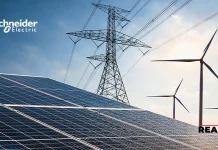Ensurge Micropower ASA and Corning Incorporated are teaming up. Their goal is to speed up the development of solid-state microbatteries. These batteries will have ultra-high energy density and are aimed at high-volume uses. This collaboration will tap into Corning’s skills in materials science. It will focus on their ribbon ceramic materials and processing expertise. It will also combine with Ensurge’s proven roll-to-roll solid-state microbattery design.
Under a Joint Development Agreement (JDA), the two companies will integrate their technologies to commercialise a new product line of microbatteries intended for consumer electronics, medical devices, industrial equipment and defence systems. Alongside the JDA, an Investment Agreement allows Corning to convert engineering services into equity in Ensurge (up to USD 5 million) and exercise warrants supporting a further USD 10 million investment over two years.
Why This Matters?
Solid-state microbatteries surpass traditional lithium-ion cells in every way. They guarantee safety, pack more energy per unit, and are incredibly thin. Wearables, IoT, medical implants, and defense electronics benefit directly from these advantages. Ensurge teams up with Corning, a leader in advanced materials and ceramics. Together, they aim to boost scalable manufacturing and create innovative materials. This powerful partnership accelerates commercialization and slashes production costs.
Impact on the Energy & Power Industry
This announcement holds several meaningful implications for the broader Energy & Power sector:
1. New Energy-Storage Frontiers
The device is a microbattery, a game-changer in small-scale energy storage. This collaboration shows a big shift. Energy storage is moving beyond just grid-scale or EV batteries. It’s now changing into very compact formats. These formats power sensors, medical devices, industrial controls, and remote-monitoring systems. These micro-storage solutions are revolutionizing energy-storage uses in the energy and power ecosystem.
2. Materials Science Driving Efficiency
Corning‘s ribbon ceramic materials and processing technologies offer better properties. This may include higher voltage tolerance, improved thermal and chemical stability, and compactness. In the energy and power industry, materials innovation is key. It drives next-generation energy-storage solutions beyond just scaling capacity or integrating systems.
3. Supply-Chain and Manufacturing Implications
The collaboration signals a push towards manufacturing readiness for solid-state microbatteries in volume. As energy & power systems increasingly rely on advanced batteries (whether for IoT, smart grid nodes, remote monitoring or edge devices), suppliers must align with the trend of miniaturised, high-energy, high-safety solutions—and potentially adapt their production processes accordingly.
4. Cross-Sector Utility and Industrial Applications
Though often digital or portable-electronics-oriented, microbatteries may play a key role in industrial-energy ecosystems: remote sensors in wind or solar farms, low-maintenance backup in smart grid components, power supply in unmanned edge nodes. Thus the energy & power industry must look at battery innovation not only from the large-scale standpoint, but from distributed-device and edge-device perspectives.
Business Effects for Companies in This Industry
For those in the energy and power value chain-like battery makers, materials suppliers, system integrators, and energy-device OEMs-this news brings new chances and strategic insights:
Opportunities:
Battery and materials firms: Companies that work with advanced ceramics, solid electrolytes, or thin-film batteries can find new partners and growth opportunities through this collaboration.
Also Read: Hyundai Motor Group and NVIDIA Partners on AI Factory to Power AI Mobility
Edge-device and IoT OEMs: Microbatteries offer better performance in a smaller size. This helps device makers redesign products like sensors, wearables, and monitoring hardware. Devices can last longer, charge faster, and run more safely. This boosts product differentiation.
System integrators in energy and power networks use micro-power solutions. These solutions enhance resilience and autonomy for remote assets. This boosts demand for grid monitoring, renewable asset health, and remote industrial monitoring.
Challenges / Considerations:
Commercialization and cost-scaling: Solid-state microbattery technology shows promise. Yet, many innovations find it hard to scale cost-effectively. Energy and power companies must track timelines and prepare their supply chains.
Integrating new battery formats into existing systems needs changes. You must redesign, certify, and test for reliability. This is crucial for critical energy infrastructure.
Safety and certification: Energy & power assets often operate under strict reliability conditions. Micro-battery solutions need to follow strict standards. These include thermal management, lifecycle, and safety in extreme conditions.
Ecosystem alignment: As microbattery innovation grows, companies need to work together. They should focus on materials, manufacturing, device design, and system integration. This teamwork may require new business models.
Looking Ahead
To fully leverage this collaboration’s implications, energy & power industry players should consider:
Investing in advanced battery road-mapping is crucial. Next-generation batteries, such as microbatteries, will change device design. They will also impact maintenance cycles and replacement strategies. This will affect the overall value of systems too.
Exploring device-centric storage niches: The need for compact, high-energy microbatteries is growing. This trend extends beyond traditional big-battery systems. Energy and power companies need to consider how this trend impacts edge-device use, network monitoring, and remote infrastructure.
Collaborating on material- and manufacturing-innovation ecosystems: As this Ensurge–Corning partnership shows, breakthroughs often come from cross-discipline collaboration (materials sciences + battery architecture + volume manufacturing). Energy & power companies will benefit from participating in those ecosystems early.
Staying alert to commercial timelines and supply-chain evolution: Smart players will monitor when such microbattery products reach commercial scale, what costs look like, how reliability is demonstrated—and position themselves accordingly.
Conclusion
The joint development agreement between Ensurge and Corning is a big step in battery innovation. This will impact not just wearable devices, but also the energy and power sector. As energy systems become smarter and more decentralized, the demand for compact, high-density, and ultra-reliable storage will increase. For energy and power companies, adapting to the changing battery landscape is vital. It helps them stay competitive in the future.




